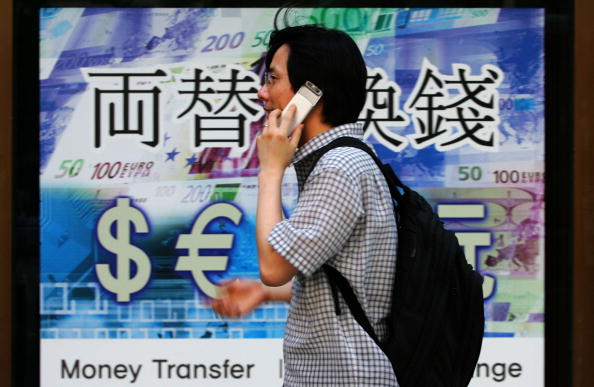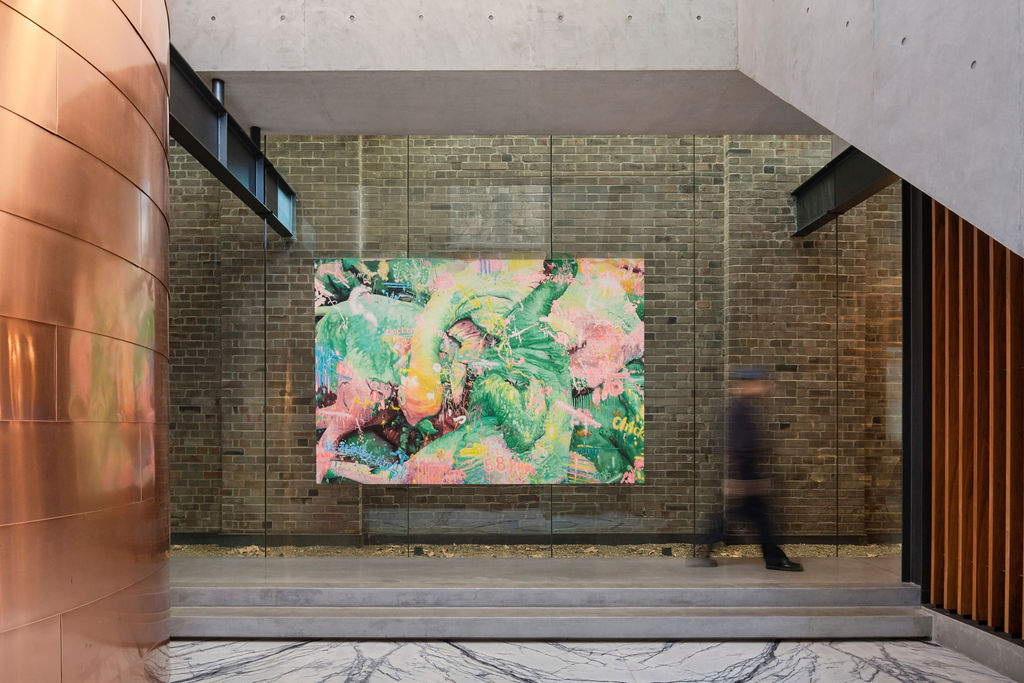South Korea Can Go Only So Far Copying Japan’s Market Reforms
Returns might improve, but the power of chaebols—including Samsung and Hyundai—will limit gains
South Korea is taking a page from Japan to boost its stock market. There are certainly some low-hanging fruits to pick, but the country’s large family-controlled corporate empires, known as chaebols, could be an obstacle to more meaningful structural change.
The country’s stock exchange is set to unveil a stock index that will take into account factors such as profitability and shareholder returns. That is modeled after a similar move taken in 2014 by Japan, which uses its new index to essentially name and shame companies that failed to make the grade.
The new index is just a part of Korea’s “corporate value-up” program announced in February, aiming to boost the valuations of its market with shareholder-friendly policies. The government also proposed making changes to the tax code to encourage companies to pay more dividends. More broadly, South Korea hopes to copy the success of Japan’s drive to improve corporate governance and returns to investors.
Buybacks and dividends in Japan have risen, and shareholders have grown more vocal. Companies also are unloading their nonstrategic shareholdings in other companies, slimming down their balance sheets.
As a result, Japan has been one of the best-performing markets in the world in recent years. The Topix index hit a record high in July, nearly 35 years after its famous bubble burst.
On the other hand, South Korea’s stock market has long suffered from a so-called Korea discount , as it trades more cheaply than other emerging markets. Its main benchmark, Kospi Composite index, has been valued at an average 12 times forward earnings in the past decade, compared with around 15 times for Japan’s Topix and Taiwan’s Taiex each.
Japan’s index has gained 40% since the end of 2022, while Taiwan’s has surged 57%. Korea’s, by contrast, has gone up only 16% over the same period.
Similar to their counterparts in Japan, Korean companies haven’t historically been willing to return much capital to shareholders. The dividend yield on the Kospi is below 2%, which is lower than many markets. Buybacks are paltry and, more important, many Korean companies don’t cancel the shares they have bought back, instead keeping them as treasury shares, using that as a tool for major shareholders to keep control of the company.
On that front, there seems to be some progress. Treasury share cancellation, excluding Samsung Electronics , so far this year has already more than doubled the full-year level of 2023, according to Goldman Sachs . New regulations restricting how companies can use their treasury shares is probably one reason. Financial companies, in particular, have been eager to buy back and cancel their shares.
The elephant in the room, however, is the power of chaebols, which dominate Korea’s economy and stock market. Companies in the Samsung group, for example, make up more than 20% of the Kospi index. Besides the electronics brand, this includes companies in areas as disparate as financial services and shipbuilding. The interests of the families who control these vast corporate empires don’t usually align with those of the minority shareholders.
Instead, they have long used convoluted corporate structures, including extensive cross-shareholdings, to maintain their grip on the conglomerates. Given the chaebols’ strong economic and political influence in the country, they won’t be so easily pressured as Japanese companies have been to unwind these arrangements.
High inheritance taxes are another reason the families might not necessarily want high share prices for their companies. The government has proposed reducing the tax, but it might not be enough.
Korea’ stock market, which houses some of the world’s best-known brands, including Samsung and Hyundai Motor , has long been a laggard. The government’s new push might yield some successes, but its biggest companies could remain the toughest nuts to crack.
 Copyright 2020, Dow Jones & Company, Inc. All Rights Reserved Worldwide. LEARN MORE
Copyright 2020, Dow Jones & Company, Inc. All Rights Reserved Worldwide. LEARN MORE
A divide has opened in the tech job market between those with artificial-intelligence skills and everyone else.
A 30-metre masterpiece unveiled in Monaco brings Lamborghini’s supercar drama to the high seas, powered by 7,600 horsepower and unmistakable Italian design.
A divide has opened in the tech job market between those with artificial-intelligence skills and everyone else.
There has rarely, if ever, been so much tech talent available in the job market. Yet many tech companies say good help is hard to find.
What gives?
U.S. colleges more than doubled the number of computer-science degrees awarded from 2013 to 2022, according to federal data. Then came round after round of layoffs at Google, Meta, Amazon, and others.
The Bureau of Labor Statistics predicts businesses will employ 6% fewer computer programmers in 2034 than they did last year.
All of this should, in theory, mean there is an ample supply of eager, capable engineers ready for hire.
But in their feverish pursuit of artificial-intelligence supremacy, employers say there aren’t enough people with the most in-demand skills. The few perceived as AI savants can command multimillion-dollar pay packages. On a second tier of AI savvy, workers can rake in close to $1 million a year .
Landing a job is tough for most everyone else.
Frustrated job seekers contend businesses could expand the AI talent pipeline with a little imagination. The argument is companies should accept that relatively few people have AI-specific experience because the technology is so new. They ought to focus on identifying candidates with transferable skills and let those people learn on the job.
Often, though, companies seem to hold out for dream candidates with deep backgrounds in machine learning. Many AI-related roles go unfilled for weeks or months—or get taken off job boards only to be reposted soon after.
Playing a different game
It is difficult to define what makes an AI all-star, but I’m sorry to report that it’s probably not whatever you’re doing.
Maybe you’re learning how to work more efficiently with the aid of ChatGPT and its robotic brethren. Perhaps you’re taking one of those innumerable AI certificate courses.
You might as well be playing pickup basketball at your local YMCA in hopes of being signed by the Los Angeles Lakers. The AI minds that companies truly covet are almost as rare as professional athletes.
“We’re talking about hundreds of people in the world, at the most,” says Cristóbal Valenzuela, chief executive of Runway, which makes AI image and video tools.
He describes it like this: Picture an AI model as a machine with 1,000 dials. The goal is to train the machine to detect patterns and predict outcomes. To do this, you have to feed it reams of data and know which dials to adjust—and by how much.
The universe of people with the right touch is confined to those with uncanny intuition, genius-level smarts or the foresight (possibly luck) to go into AI many years ago, before it was all the rage.
As a venture-backed startup with about 120 employees, Runway doesn’t necessarily vie with Silicon Valley giants for the AI job market’s version of LeBron James. But when I spoke with Valenzuela recently, his company was advertising base salaries of up to $440,000 for an engineering manager and $490,000 for a director of machine learning.
A job listing like one of these might attract 2,000 applicants in a week, Valenzuela says, and there is a decent chance he won’t pick any of them. A lot of people who claim to be AI literate merely produce “workslop”—generic, low-quality material. He spends a lot of time reading academic journals and browsing GitHub portfolios, and recruiting people whose work impresses him.
In addition to an uncommon skill set, companies trying to win in the hypercompetitive AI arena are scouting for commitment bordering on fanaticism .
Daniel Park is seeking three new members for his nine-person startup. He says he will wait a year or longer if that’s what it takes to fill roles with advertised base salaries of up to $500,000.
He’s looking for “prodigies” willing to work seven days a week. Much of the team lives together in a six-bedroom house in San Francisco.
If this sounds like a lonely existence, Park’s team members may be able to solve their own problem. His company, Pickle, aims to develop personalised AI companions akin to Tony Stark’s Jarvis in “Iron Man.”
Overlooked
James Strawn wasn’t an AI early adopter, and the father of two teenagers doesn’t want to sacrifice his personal life for a job. He is beginning to wonder whether there is still a place for people like him in the tech sector.
He was laid off over the summer after 25 years at Adobe , where he was a senior software quality-assurance engineer. Strawn, 55, started as a contractor and recalls his hiring as a leap of faith by the company.
He had been an artist and graphic designer. The managers who interviewed him figured he could use that background to help make Illustrator and other Adobe software more user-friendly.
Looking for work now, he doesn’t see the same willingness by companies to take a chance on someone whose résumé isn’t a perfect match to the job description. He’s had one interview since his layoff.
“I always thought my years of experience at a high-profile company would at least be enough to get me interviews where I could explain how I could contribute,” says Strawn, who is taking foundational AI courses. “It’s just not like that.”
The trouble for people starting out in AI—whether recent grads or job switchers like Strawn—is that companies see them as a dime a dozen.
“There’s this AI arms race, and the fact of the matter is entry-level people aren’t going to help you win it,” says Matt Massucci, CEO of the tech recruiting firm Hirewell. “There’s this concept of the 10x engineer—the one engineer who can do the work of 10. That’s what companies are really leaning into and paying for.”
He adds that companies can automate some low-level engineering tasks, which frees up more money to throw at high-end talent.
It’s a dynamic that creates a few handsomely paid haves and a lot more have-nots.
ABC Bullion has launched a pioneering investment product that allows Australians to draw regular cashflow from their precious metal holdings.
Now complete, Ophora at Tallawong offers luxury finishes, 10-year defect insurance and standout value from $475,000.






















